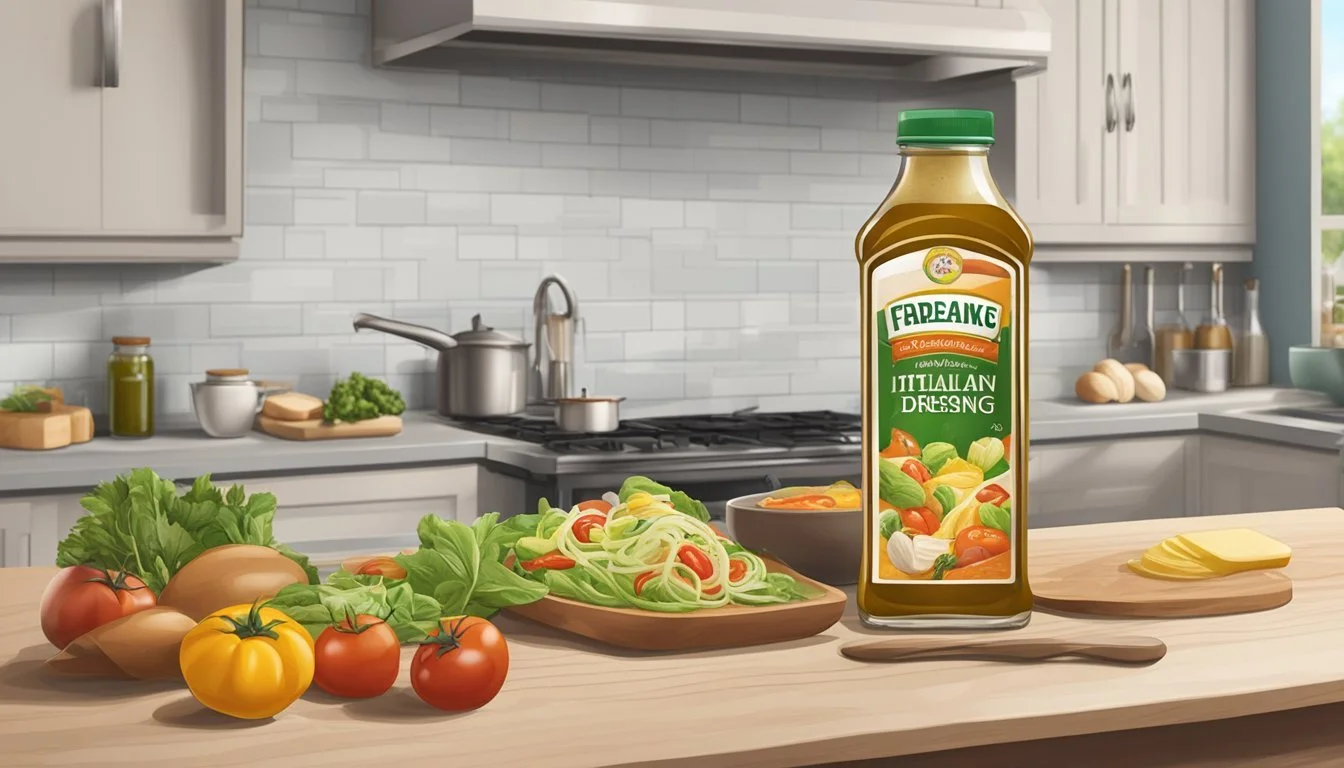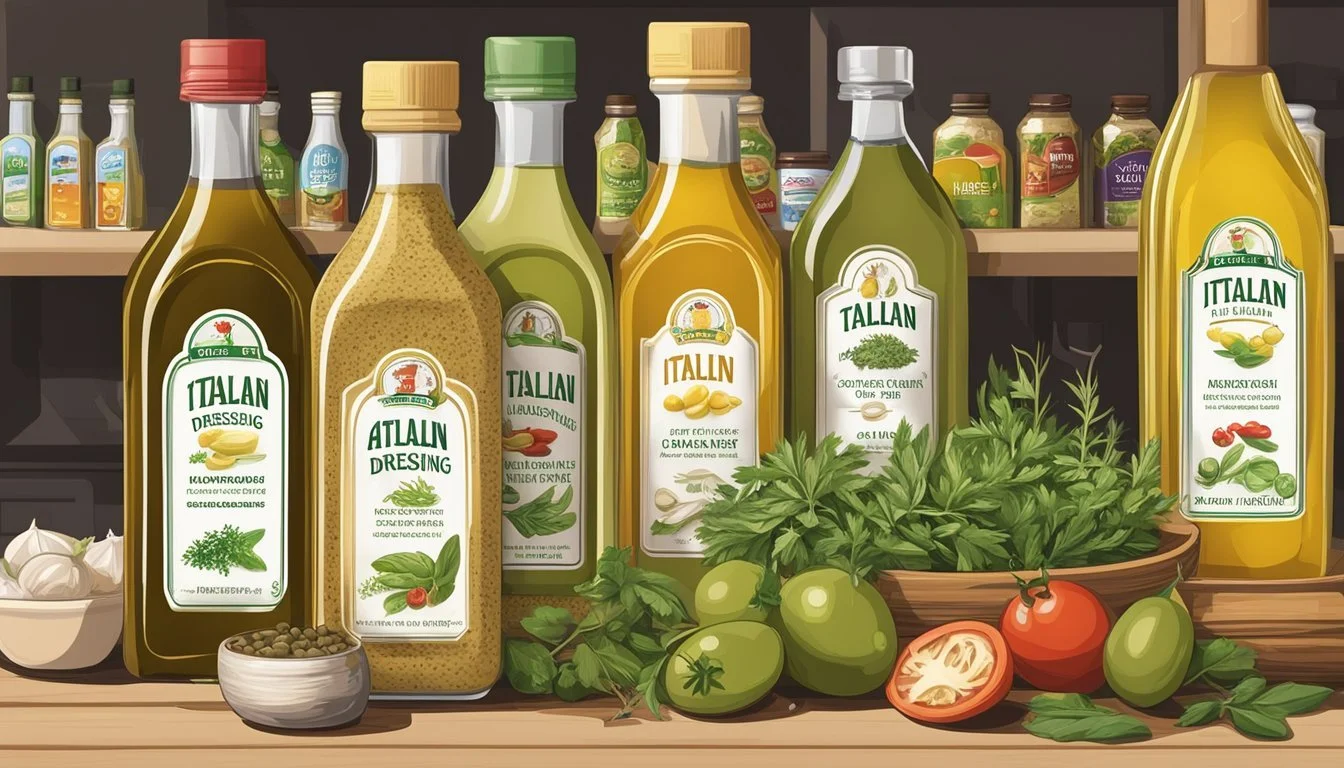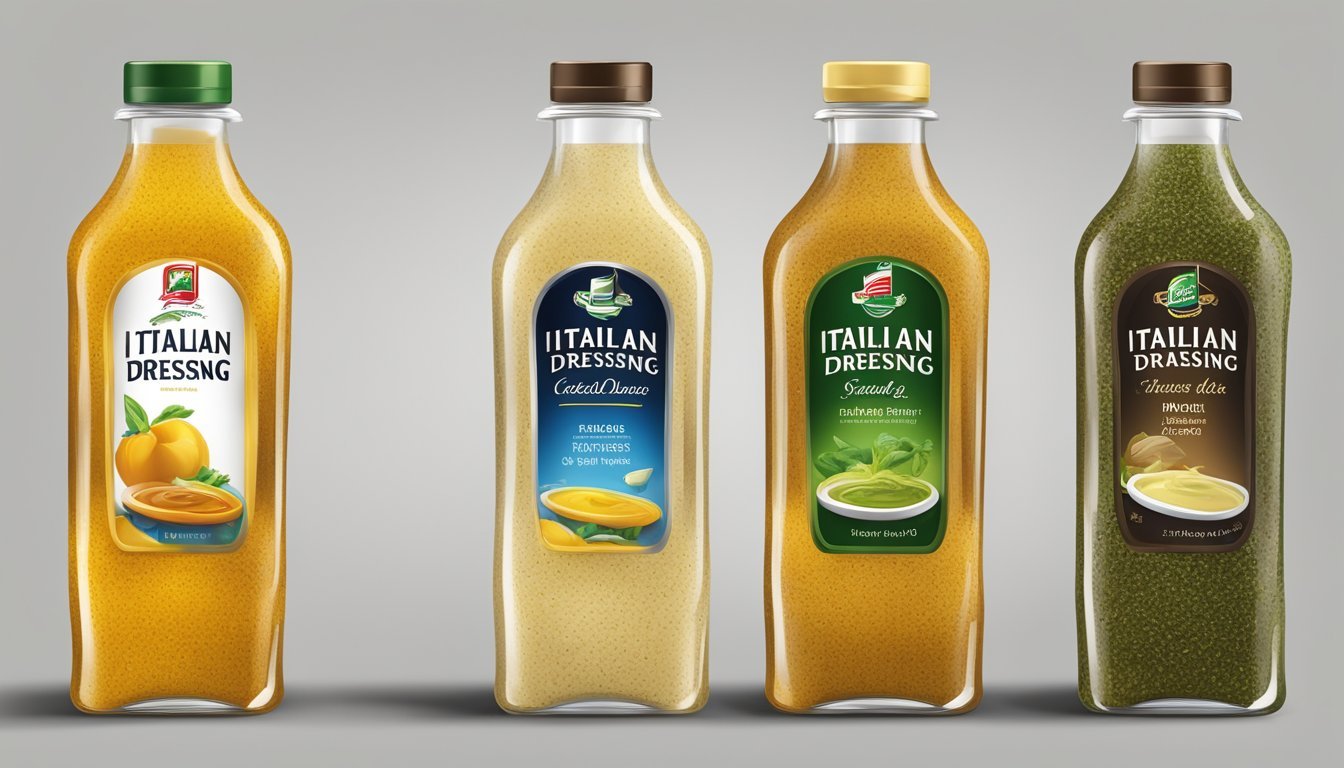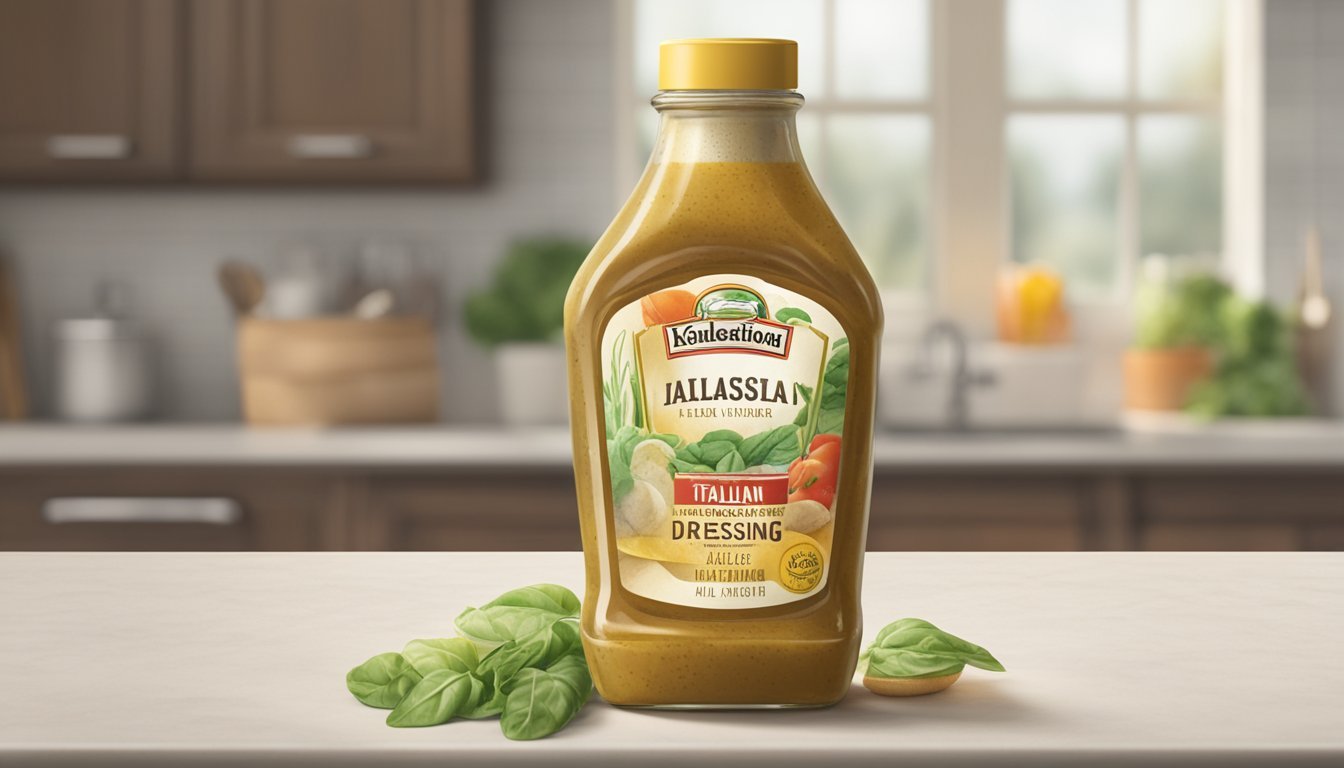Does Italian Dressing Mix Expire?
Shelf Life and Storage Tips
Italian dressing mix, like most condiments, comes with an expiration date. This date indicates the period the mix is expected to retain its best quality. The mix can often be used safely past this date if stored properly and showing no signs of spoilage, such as changes in smell, color, or texture.
Quality is another aspect that consumers should keep in mind. Over time, the taste and consistency of Italian dressing mix may deteriorate. Proper storage in a cool, dark place can help maintain its quality for a longer period.
Safety should be a primary concern when considering the use of an expired product. It's crucial to inspect any dressing mix for visible signs of spoilage. If the mix has been stored correctly and appears unchanged, it is generally safe to use past the expiration date.
Understanding Expiration Dates
Expiration dates on Italian dressing mix provide guidance on quality and safety. They are critical for ensuring the dressing maintains its intended taste and effectiveness.
Decoding Label Terms
Various terms are used on packaging to communicate freshness and safety. Best By, Best If Used By, and Best Before indicate the period during which the product is at its highest quality, as determined by the manufacturer. These dates are about optimal flavor and texture.
Expiration Dates denote when the manufacturer no longer guarantees the product’s quality. This isn't always a safety issue, but taste and effectiveness may diminish. Understanding these terms can help consumers make informed decisions about using expired dressing mixes.
Shelf Life Fundamentals
The shelf life of Italian dressing mix depends on several factors, including storage conditions. Unopened dressing mix can last several months past its printed date if kept in a cool, dry place. Once opened, its shelf life can decrease rapidly due to exposure to air and moisture.
Proper storage is key. Keep the mix in a tightly sealed container to maintain its quality. While it might be safe to consume after the expiration date if stored properly, checking for signs of spoilage, such as off smells or changes in color, is important. Each step ensures the dressing mix remains safe and tasty.
Factors Affecting Italian Dressing Quality
Several factors influence the quality and shelf life of Italian dressing, including the ingredients used, storage conditions, and presence of preservatives. Understanding these factors can help ensure the dressing remains safe and palatable for as long as possible.
Role of Ingredients
Oil and vinegar are the primary ingredients in Italian dressing, directly impacting its quality and shelf life. Oil can become rancid over time, particularly if exposed to light or air. Vinegar, on the other hand, has natural preservative properties, which can help maintain the dressing's quality longer.
Other ingredients, such as herbs and spices, can also affect the dressing's stability. Fresh ingredients in homemade versions may degrade faster than dried or processed components found in store-bought dressings.
Impact of Storage Conditions
Proper storage conditions are crucial for maintaining the quality of Italian dressing. Heat and light can accelerate the degradation of oil, causing the dressing to spoil more quickly. Storing the dressing in a cool, dark place like a pantry is recommended for unopened bottles.
Once opened, it is essential to refrigerate the dressing. This slows down the growth of bacteria and other microorganisms that can cause spoilage. Exposure to air can also lead to oxidation, further affecting the oil's quality and overall safety of the dressing.
Significance of Preservatives
Preservatives play a vital role in extending the shelf life of Italian dressing. Commercial dressings often contain added preservatives to prevent microbial growth and oxidation. Common preservatives include sodium benzoate and potassium sorbate, which help keep the dressing stable for longer periods.
Homemade dressings usually lack these preservatives, leading to a shorter shelf life. It's important to consume homemade dressings within a few days and keep them refrigerated to reduce the risk of spoilage.
By understanding these factors, you can better manage the quality and safety of your Italian dressing, ensuring it remains fresh and enjoyable for as long as possible.
Proper Storage Methods
Proper storage of Italian dressing mix is essential to maintain its quality and longevity. Key factors include using the right environment and following specific guidelines for both unopened and opened dressing.
Unopened Dressing Storage
Unopened Italian dressing mix should be stored in a cool, dark place. The pantry or a kitchen cabinet away from the stove and direct sunlight is ideal. Exposure to heat and light can accelerate the deterioration process, affecting the mix's shelf life.
It's best to keep the package in its original, unopened condition until ready for use. An unopened dressing mix typically has a shelf life of 12 to 18 months, depending on the brand and storage conditions. Make sure to always check the expiration date before using.
Opened Dressing Preservation
Once opened, Italian dressing mix needs to be transferred to an airtight container to prevent moisture and contaminants from affecting its quality. Store the airtight container in a cool, dark place, such as a pantry, or in the refrigerator if specified by the manufacturer.
In the refrigerator, the dressing will retain its quality for longer periods. Generally, opened dressing mix should be used within six months for the best taste and quality. Always inspect for any changes in smell, color, or texture, which can indicate spoilage.
Signs of Spoilage in Italian Dressing
Identifying spoilage in Italian dressing is crucial for maintaining food safety and quality. Key indicators to watch for include changes in appearance, smell, and texture.
Visual Indicators
Color: Fresh Italian dressing usually has a consistent color. If it turns unusual shades, it may indicate spoilage.
Mold: An unmistakable sign of spoilage is the presence of mold. Always discard dressing if mold is visible.
Separation: While some oil-based dressings may naturally separate, excessive separation that does not mix back together is a red flag.
Olfactory Warning Signs
Smell: Italian dressing should have a pleasant, tangy aroma. An off, rancid, or sour smell signals that it has gone bad.
Off-Odors: Any unusual or unpleasant smell is a clear indicator that the dressing should not be consumed.
Texture and Consistency Clues
Consistency: Fresh Italian dressing has a smooth and even texture. Changes like clumping, thickening, or becoming overly watery may indicate spoilage.
Oil-Based Dressings: For oil-based varieties, a thick, gelatinous consistency or crystallization is a warning sign that it is no longer safe to eat.
Discard: If any changes in consistency are noticed, it is best to discard the dressing to avoid potential health risks.
Health Implications of Expired Dressing
Expired Italian dressing can pose various health risks, primarily due to potential bacterial and mold growth, which can lead to food poisoning. Awareness of side effects from consuming spoiled condiments is crucial for maintaining health and safety.
Food Poisoning Risks
Bacteria such as Salmonella, Listeria, and E. coli can grow in expired dressing. Consuming these bacteria might lead to foodborne illnesses. Symptoms often include nausea, vomiting, diarrhea, and abdominal pain.
Spoiled dressing can exhibit changes in odor, color, and texture. It is important to check these signs since they indicate bacterial activity.
Safety Tip: If the dressing smells sour or has visible mold, it must be discarded to avoid health risks.
Side Effects of Spoiled Condiments
Spoiled dressings can cause unpleasant side effects. Beyond digestive issues, some might experience headaches and fatigue after consuming expired products.
Spoilage-related changes in ingredients like oil and vinegar could lead to off-flavors, making the dressing unpalatable.
Health Focus: It is essential to monitor any changes in taste and texture, as these are indicators of spoilage. Regularly checking storage conditions can help in preventing consumption of unsafe products.
Usage of Nearly-Expired Dressing
Nearly-expired Italian dressing mix can still be useful in various culinary applications and even in alternative uses, provided it shows no signs of spoilage such as off smell or discoloration.
Culinary Applications
Using nearly-expired Italian dressing mix in cooking can add a burst of flavor to numerous dishes. It works well as a marinade for meats, infusing them with a robust, zesty taste that enhances the overall dish.
The dressing can also be used in baking, especially in savory recipes such as marinated, baked chicken or vegetables. In salads, it continues to provide a classic, rich flavor, making it suitable for sandwiches and as a topping for fresh greens.
Leftovers can benefit from the last bit of dressing mix, ensuring nothing goes to waste. Mixing it into casserole dishes or adding it to cooked pasta can bring out the best in a meal nearing its peak quality lifespan.
Alternative Uses
Aside from its culinary uses, nearly-expired Italian dressing mix can serve other purposes, like a quick seasoning blend. Sprinkle it over popcorn or roasted nuts for a unique snack.
It can be combined with olive oil and vinegar to create a bath for leftover bread pieces, making croutons for salads. Thus, even if not in prime condition, the dressing can enhance various side dishes, ensuring no ingredients are unnecessarily discarded. This maximizes the utility of the dressing while maintaining food safety.
Homemade Versus Store-Bought
Homemade and store-bought Italian dressing mixes differ significantly in terms of shelf life and how to determine their freshness. Each has specific factors that can affect their longevity and quality.
Comparing Shelf Lives
Homemade Italian dressing mixes typically have a shorter shelf life compared to store-bought options. This is primarily due to the absence of preservatives. Ingredients like vinegar, olive oil, and herbs in homemade mixes are natural but lack the chemicals that prolong shelf life.
Store-bought Italian dressing mixes often contain artificial preservatives. These chemicals help extend their shelf life, sometimes up to several years when unopened. Refrigeration after opening is still necessary to maintain quality.
Homemade Mixes: Shorter shelf life Store-Bought Mixes: Longer shelf life
Determining Freshness
Checking the freshness of Italian dressing mixes involves looking for signs of spoilage. For both homemade and store-bought mixes, an off smell, discoloration, or changes in texture indicate they are no longer suitable for consumption.
Homemade mixes require more frequent checks due to their lack of preservatives. Store-bought mixes, while generally longer-lasting, are still susceptible to spoilage, especially after opening.
For safety, always store mixes properly in a cool, dry place and avoid exposure to heat or moisture.
Homemade Mixes: Watch for spoilage signs Store-Bought Mixes: Still need checks after opening
Extending the Life of Italian Dressing
Extending the life of Italian dressing involves storage techniques such as freezing and creative repurposing. Properly storing unused portions can help maintain their quality and flavor for longer periods.
Freezing Options
Freezing Italian dressing can be an effective way to prolong its shelf life. First, it should be transferred to an airtight container, such as a Mason jar or freezer-safe bag. This will prevent air from affecting the dressing during storage.
Ensure that the jar or bag is not completely filled, as the dressing may expand when frozen. Seal the container tightly and label it with the date. When ready to use, let the dressing thaw in the refrigerator. Mix well before serving to restore its consistency.
Creative Repurposing
Creative repurposing can extend the use of Italian dressing beyond salads. Turn the dressing into a flavorful marinade for meats or vegetables. Mix it with olive oil and vinegar for a new twist, adding extra zing to chicken or steak.
Unused portions of Italian dressing mix can also be used in dips or sauces. Combine the mix with yogurt or sour cream to create a tasty dip. Transforming the dressing in this way ensures that it does not go to waste and adds variety to meals.









